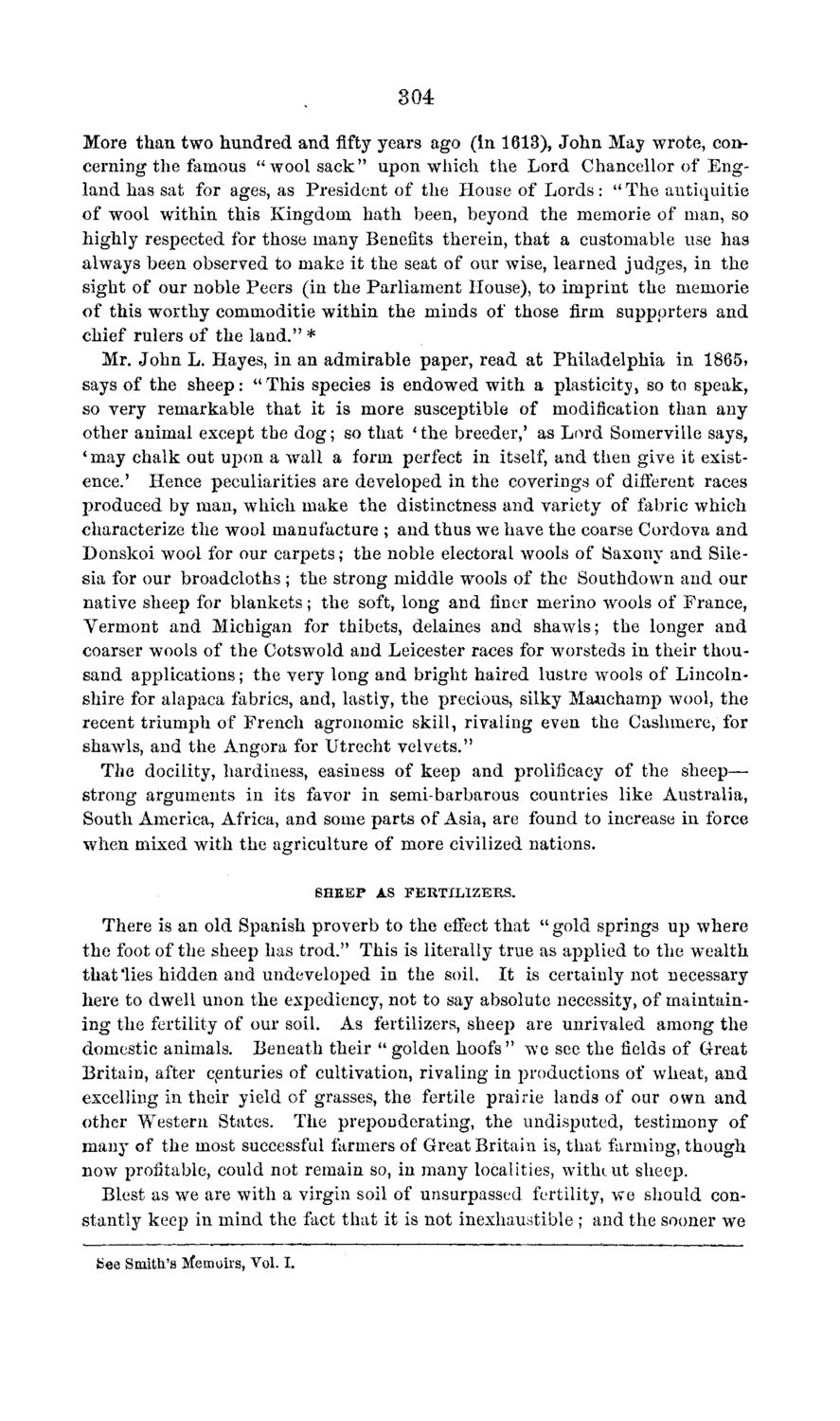| |
| |
Caption: Board of Trustees Minutes - 1869
This is a reduced-resolution page image for fast online browsing.

EXTRACTED TEXT FROM PAGE:
304 More t h a n two hundred and fifty years ago (in 1613), J o h n May wrote, concerning the famous " w o o l s a c k " upon which the Lord Chancellor of England has sat for ages, as President of the House of L o r d s : " The antiquitie of wool within this Kingdom hath been, beyond the memorie of man, so highly respected for those many Benefits therein, t h a t a customable use has always been observed to make it the seat of our wise, learned judges, in the sight of our noble Peers (in the Parliament House), to imprint the memorie of this worthy commoditie within the minds of those firm supporters and chief rulers of the land." * Mr. J o h n L. Hayes, in an admirable paper, read at Philadelphia in 1865» says of the sheep: " T h i s species is endowed with a plasticity, so to speak, so very remarkable t h a t it is more susceptible of modification than any other animal except the d o g ; so that ' t h e breeder,' as Lord Somerville says, * may chalk out upon a wall a form perfect in itself, and then give it existence.' Hence peculiarities are developed in the coverings of different races produced by man, which make the distinctness and variety of fabric which characterize the wool manufacture ; and thus we have the coarse Cordova and Donskoi wool for our carpets; the noble electoral wools of Saxony and Silesia for our broadcloths ; the strong middle wools of the Southdown and our native sheep for blankets; the soft, long and finer merino wools of France, Vermont and Michigan for thibets, delaines and shawls; the longer and coarser wools of the Cotswold and Leicester races for worsteds in their thousand applications; the very long and bright haired lustre wools of Lincolnshire for alapaca fabrics, and, lastly, the precious, silky M&uchamp wool, the recent triumph of French agronomic skill, rivaling even the Cashmere, for shawls, and the Angora for Utrecht velvets." The docility, hardiness, easiness of keep and prolificacy of the sheep— strong arguments in its favor in semi-barbarous countries like Australia, South America, Africa, and some parts of Asia, are found to increase in force when mixed with the agriculture of more civilized nations. SHEEP AS FERTILIZERS. There is an old Spanish proverb to the effect t h a t " gold springs up where the foot of the sheep has trod." This is literally true as applied to the wealth that *lies hidden and undeveloped in the soil. It is certainly not necessary here to dwell unon the expediency, not to say absolute necessity, of maintaining the fertility of our soil. As fertilizers, sheep are unrivaled among the domestic animals. Beneath their " golden hoofs" we see the fields of Great Britain, after centuries of cultivation, rivaling in productions of wheat, and excelling in their yield of grasses, the fertile prairie lands of our own and other Western States. The preponderating, the undisputed, testimony of many of the most successful farmers of Great Britain is, that farming, though now profitable, could not remain so, in many localities, witheut sheep. Blest as we are with a virgin soil of unsurpassed fertility, we should constantly keep in mind the fact t h a t it is not inexhaustible ; and the sooner we Bee Smith's Memoirs, Vol. I.
| |